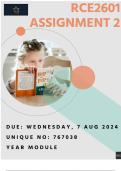,Research Proposal
Title:
Enhancing Support for Learners with Physical Disabilities:
Introduction
Enhancing support for learners with physical disabilities involves providing
necessary accommodations and resources to ensure that individuals with
physical disabilities can fully participate in and benefit from educational
activities and programs. This may include providing assistive technology,
modifying learning materials, offering physical accessibility to facilities, and
providing appropriate support services such as personal care assistance,
physical therapy, and occupational therapy (Green, 2022). The goal is to
create an inclusive and accessible learning environment that empowers
individuals with physical disabilities to reach their full potential and achieve
academic success (White, 2021). By addressing these needs, educators
can help ensure that all students have equal opportunities to thrive
academically (Black, 2020).
Firstly, learners with physical disabilities face unique challenges in their
pursuit of education. From navigating physical spaces to accessing
, learning materials, these individuals require enhanced support to ensure
that they can achieve their educational goals (Smith, 2021). All learners,
regardless of physical abilities, deserve equal access to education. By
providing enhanced support for learners with physical disabilities, we can
create a more inclusive and equitable learning environment (Johnson,
2020). One crucial aspect of enhancing support for these learners is
ensuring physical accessibility (Brown, 2022).This includes making
classrooms, libraries, and other educational spaces wheelchair accessible,
installing ramps and elevators, and providing accessible restrooms.
Additionally, educators should consider the layout of the classroom to
accommodate individuals with physical disabilities, ensuring that they can
move around the space comfortably and participate in activities without
barriers (Anderson, 2021). Furthermore, technology can play a significant
role in enhancing support for learners with physical disabilities. For
example, individuals with mobility impairments may benefit from using
assistive technology such as voice recognition software or adaptive
keyboards to facilitate their participation in class activities and assignments
(Williams, 2020).





